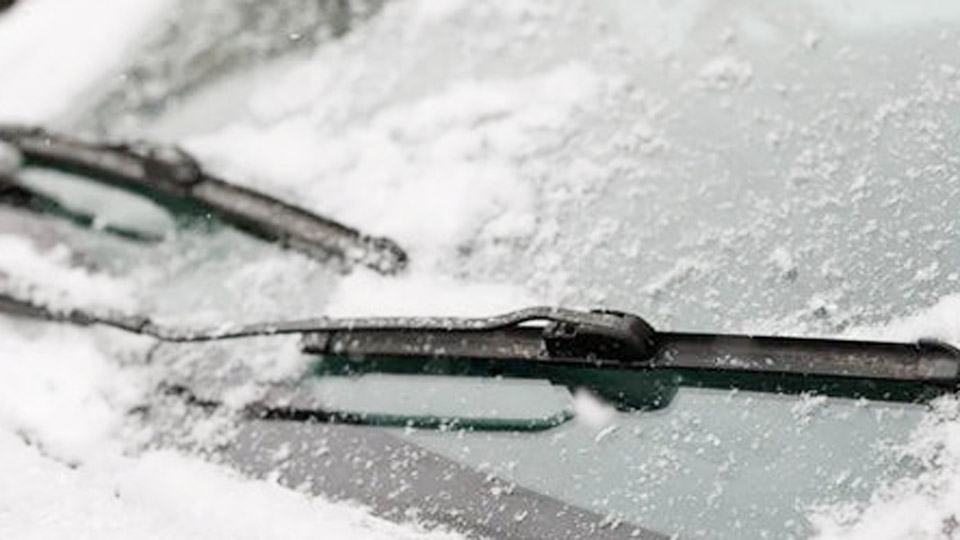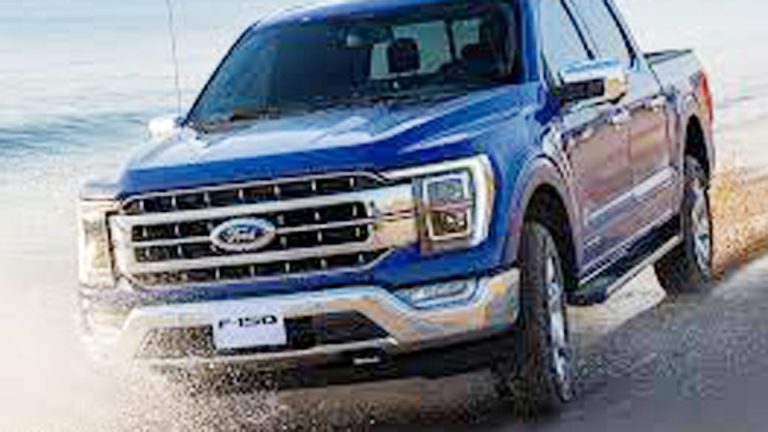I can’t count how many times I’ve had a customer roll into the shop during winter complaining, “My wiper blades just smear snow—they don’t clear anything!” Honestly, I’ve run into the same problem myself more than once, especially after a cold snap or an overnight snowstorm. Why are automobile wiper blades so hard to clean snow out of? Well, it’s not always just the blades—it’s a mix of design limitations, frozen joints, worn rubber, and even the type of snow you’re dealing with.
I’ve seen how frustrating it can be when you’re scraping ice off your windshield at 6 a.m., only to have your wipers freeze up or leave streaks the minute you hit the road. But here’s the thing—understanding the why behind these issues can save you money, protect your windshield, and seriously boost your visibility in bad weather. Stick with me, and I’ll break down what’s really going on—and how to fix it fast.

Image by hyper-blades
Why Wiper Blades Struggle with Snow
Wiper blades are designed to sweep away rain, dirt, and light debris, but snow—especially wet, heavy snow or ice—poses a unique challenge. The issue boils down to a few key factors: the blade’s material, design, and the sheer weight of winter precipitation.
Most standard wiper blades are made of rubber, which works great in mild conditions but stiffens up in freezing temperatures. When rubber gets cold, it loses flexibility, making it harder for the blade to conform to the windshield’s curve.
Snow and ice can also stick to the blade itself, creating a barrier that prevents proper contact with the glass. Add in the fact that snow often comes with ice, slush, or road salt, and you’ve got a recipe for poor wiper performance.
Then there’s the design. Traditional frame-style wiper blades have exposed metal or plastic arms that can collect snow, causing the blade to lift off the windshield. Even modern beam-style blades, which are sleeker, can struggle when snow builds up in the hinges or along the blade edge. If you’ve ever seen your wipers skip or chatter across the windshield, that’s often the snow’s weight overpowering the wiper arm’s spring tension.
Last winter, I was driving my old Ford F-150 through a snowstorm in Wisconsin. The wipers were only six months old, but they couldn’t handle the wet, sticky snow. I had to pull over and manually clear the blades every few miles. Lesson learned? Standard blades just aren’t built for heavy snow unless you take extra steps.
Types of Wiper Blades for Winter Conditions
Not all wiper blades are created equal, especially when it comes to snow. Let’s break down the main types and how they perform in winter.
Traditional Frame Blades
These are the old-school wiper blades with a metal or plastic frame holding the rubber squeegee. They’re affordable and widely available, but snow and ice can clog the frame’s joints, reducing contact with the windshield. They’re best for mild climates but struggle in heavy snow.
Pros: Cheap, easy to find, simple to install.
Cons: Snow buildup in the frame, stiffens in cold, short lifespan in winter.
Beam Blades
Beam blades have a sleek, frameless design that uses a single piece of flexible metal to press the blade against the windshield. They’re less prone to snow buildup and perform better in cold weather. Many premium brands, like Bosch ICON or Rain-X Latitude, use this design.
Pros: Aerodynamic, less snow buildup, better windshield contact.
Cons: More expensive, may still struggle with heavy ice.
Hybrid Blades
Hybrid blades combine the frame of traditional blades with a plastic cover to reduce snow accumulation. Michelin Stealth Ultra is a great example. They’re a solid middle ground for winter driving.
Pros: Durable, resists snow clogging, good pressure distribution.
Cons: Can be pricey, not as flexible as beam blades.
Winter-Specific Blades
Winter blades, like Anco Winter Wiper Blades, are built for harsh conditions. They often feature a rubber boot over the frame to prevent snow and ice buildup, plus a special rubber compound that stays flexible in subzero temperatures.
Pros: Excellent for heavy snow, durable in cold, prevents freezing to windshield.
Cons: Bulky, less effective in warm weather, higher cost.
| Blade Type | Best For | Snow Performance | Price Range (per blade) |
|---|---|---|---|
| Traditional | Mild climates | Poor | $5–$15 |
| Beam | Mixed climates | Good | $15–$30 |
| Hybrid | Moderate winters | Very Good | $20–$35 |
| Winter | Harsh winters | Excellent | $25–$40 |
If you live in a place like Michigan or Colorado, where snow is a regular guest, winter-specific or hybrid blades are your best bet. For occasional snow, beam blades can get the job done with proper care.
Why Snow Sticks to Wiper Blades
Ever notice how snow seems to glue itself to your wiper blades? It’s not just bad luck. Snow sticks due to a combination of physics and chemistry.
First, wet snow is sticky by nature. When temperatures hover around freezing, snowflakes partially melt, creating a slushy mess that adheres to the blade’s surface. Ice can form when this slush refreezes, locking the blade in place.
Second, road salt and grime mix with the snow, creating a gritty paste that’s tough to wipe away. Finally, if your windshield isn’t clean, dirt and oil can reduce the blade’s ability to glide smoothly, making snow buildup worse.
I learned this the hard way with my wife’s Subaru Outback. We parked it overnight during a snowstorm, and the blades froze to the windshield. When I tried to free them, the rubber tore slightly, and they streaked for weeks afterward. The fix? A little prep goes a long way, which I’ll cover next.
How to Prevent Snow Buildup on Wiper Blades
Preventing snow buildup is easier than scraping it off mid-storm. Here’s a step-by-step guide based on what’s worked for me over years of battling snowy commutes.
Step 1: Lift Your Wipers
Before a snowstorm hits, lift your wiper blades off the windshield. This prevents them from freezing to the glass and makes clearing snow easier. Most wiper arms have enough tension to stay upright. If they don’t, wedge a small piece of cardboard under the arm to keep it elevated.
Pro Tip: If you forget to lift the blades and they’re frozen, don’t yank them. Pour lukewarm (not hot!) water over the blades to loosen the ice, then gently free them.
Step 2: Clean Your Windshield and Blades
A dirty windshield is a magnet for snow and ice. Before winter sets in, clean your windshield with a quality glass cleaner like Invisible Glass. Then, wipe the wiper blades with a cloth soaked in windshield washer fluid or rubbing alcohol to remove grime and oil.
Real-World Tip: I keep a microfiber cloth and a small bottle of washer fluid in my glovebox for quick cleanups at gas stations. It’s saved me more than once during sudden snowfalls.
Step 3: Use Winter-Grade Washer Fluid
Standard washer fluid can freeze in cold temps, leaving you with a useless spray. Switch to a winter-grade fluid rated for subzero temperatures. Brands like Prestone De-Icer are formulated to melt light ice and cut through road salt.
Warning: Never use plain water in your washer reservoir in winter—it’ll freeze and could damage the pump.
Step 4: Apply a Water-Repellent Coating
Products like Rain-X or Aquapel create a hydrophobic layer on your windshield, causing snow and water to bead up and slide off. This reduces the workload on your wipers. Apply it monthly for best results, following the instructions carefully for a streak-free finish.
My Experience: I tried Rain-X on my Jeep Cherokee last winter, and it was a game-changer. Light snow slid off without even needing the wipers on low-speed drives.
Step 5: Invest in Winter Blades
If you’re in a snowy region, winter-specific blades are worth the investment. Their rubber boots and flexible materials are designed to shrug off snow and ice. Swap them out in the fall, then switch back to standard blades in spring to extend their life.
How to Clear Snow from Wiper Blades Safely
Sometimes, despite your best efforts, snow still builds up. Here’s how to clear it without damaging your blades or wiper system.
Step-by-Step Guide to Clearing Snow
Turn Off the Wipers: Never run the wipers while clearing snow. The motor can burn out if the blades are stuck, and you risk stripping the wiper arm linkage.
Brush Off Loose Snow: Use a snow brush or soft broom to remove loose snow from the windshield and blades. Start from the top and work down to avoid pushing snow into the wiper hinges.
Scrape Ice Gently: Use a plastic ice scraper to chip away ice from the blades and windshield. Avoid metal scrapers—they can scratch the glass or tear the rubber.
Thaw Frozen Blades: If the blades are frozen to the windshield, spray them with winter-grade washer fluid or lukewarm water. Wait a minute, then gently lift the blades.
Wipe the Blades: Run a clean cloth along the blade edge to remove any remaining slush or grime.
Test the Wipers: Turn on the wipers and spray washer fluid to ensure they’re moving smoothly without streaking.
Warning: Don’t use your wiper blades to clear heavy snow. The weight can damage the wiper motor or snap the linkage, leading to costly repairs. I once saw a buddy’s Chevy Silverado need a $200 wiper transmission fix because he tried to power through a foot of snow.
Choosing the Right Wiper Blades for Snowy Climates
Picking the right wiper blades for winter is half the battle. Here’s what to look for and some top recommendations based on my experience and what’s popular among car enthusiasts.
Key Features to Consider
Material: Silicone blades, like those from PIAA or Rain-X Endura, stay flexible in cold and last longer than rubber. They also apply a water-repellent coating as they wipe.
Design: Beam or winter-specific blades resist snow buildup better than traditional frames.
Size: Check your owner’s manual or measure your existing blades to ensure a proper fit. Most auto parts stores can look up the right size for your car.
Durability: Look for blades with a warranty or high customer ratings for longevity, especially if you drive in harsh conditions.
Top Picks for Winter Wiper Blades
| Brand & Model | Type | Key Features | Price (Pair) |
|---|---|---|---|
| Bosch ICON | Beam | ClearMax 365 technology, streak-free, durable | $45–$60 |
| Rain-X Latitude | Beam | Water-repellent coating, quiet operation | $40–$55 |
| Michelin Stealth Ultra | Hybrid | Smart Hinge cover, resists snow buildup | $50–$65 |
| Anco Winter | Winter | Rubber boot, flexible in subzero temps | $30–$45 |
| PIAA Si-Tech | Beam | Silicone coating, UV-resistant | $50–$70 |
My Pick: I’ve had great luck with Bosch ICON blades on my Dodge Ram. They’re pricey but last up to two years with proper care, even in brutal winters. If you’re on a budget, Anco Winter blades are a solid choice for heavy snow.
Maintenance Tips to Extend Wiper Blade Life
Wiper blades don’t last forever, but a little TLC can keep them working longer, especially in winter. Here’s what I do to get the most out of mine.
Clean Regularly: Wipe the blades with a cloth and washer fluid every couple of weeks to remove dirt and salt.
Avoid Hot Water: Never pour hot water on a frozen windshield or blades—it can crack the glass or damage the rubber.
Replace in Pairs: If one blade is worn, the other isn’t far behind. Replace both to ensure even performance.
Store Properly: If you swap out winter blades in spring, store them in a cool, dry place to prevent rubber degradation.
Check Wiper Arms: Bent or weak wiper arms can reduce blade contact. Inspect them annually and replace if needed.
Real-World Example: On my old Honda Civic, I neglected to clean the blades for a whole winter. By spring, they were streaking badly because road salt had eaten into the rubber. A quick wipe-down every gas station stop would’ve saved me an early replacement.
Common Mistakes to Avoid
Even seasoned drivers make mistakes with wiper blades in winter. Here are some pitfalls to steer clear of:
Using Wipers as Snow Plows: As tempting as it is to let your wipers clear a snowy windshield, it’s a recipe for damage. Always brush off snow first.
Ignoring Streaks: Streaking or chattering blades aren’t just annoying—they’re a sign of wear or improper installation. Fix the issue before it worsens.
Buying Cheap Blades: Bargain blades might save you a few bucks upfront, but they wear out faster and perform poorly in snow.
Forgetting the Rear Wiper: If your vehicle has a rear wiper, give it the same care as the front. A clear rear windshield is crucial for safety.
Conclusion
Dealing with snow-clogged wiper blades is a hassle, but it doesn’t have to be. By understanding why automobile wiper blades are hard to clean snow out of—stiff materials, snow buildup, and poor design choices—you can take steps to make winter driving safer and less stressful.
Lift your wipers before a storm, invest in winter-specific or beam blades, and keep your windshield and blades clean. With a little prep and the right tools, you’ll be ready to tackle even the worst blizzards.
Keep a small ice scraper and a bottle of winter-grade washer fluid in your trunk for emergencies. You’ll thank yourself when you’re stuck in a snowstorm miles from home.
FAQ
Why do my wiper blades freeze to the windshield?
Wiper blades freeze when moisture or snow on the windshield refreezes in cold temperatures, gluing the rubber to the glass. Lift the blades before a storm or use winter-grade washer fluid to prevent this.
Can I use regular wiper blades in winter?
Regular blades can work in light snow, but they stiffen in cold and collect snow in their frames. Winter-specific or beam blades are better for harsh conditions.
How often should I replace wiper blades in snowy climates?
Replace blades every 6–12 months, depending on wear. If they streak, chatter, or skip in snow, it’s time for new ones.
Does Rain-X really help with snow?
Yes, Rain-X creates a hydrophobic layer that helps snow slide off the windshield, reducing the need for wipers. Reapply monthly for best results.
What’s the best way to clean snow off my windshield?
Use a snow brush to remove loose snow, then a plastic ice scraper for ice. Spray winter-grade washer fluid to loosen stubborn ice, and never use hot water—it can crack the glass.




